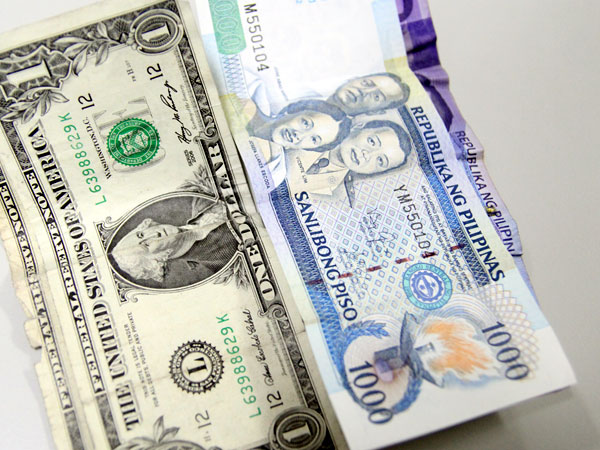Peso breaches 52 vs dollar, first time in 2.5 years

INQUIRER.net FILE PHOTO
MANILA, Philippines — The Philippine peso breached the 52-per-dollar mark on Monday for the first time in almost two and a half years, with expectations that it will get even weaker over the next few months due to the worsening Russia-Ukraine conflict.
The local currency closed trading at P52.001 to the dollar on March 7, the weakest position since the P52.042 recorded on Sept. 30, 2019. As of this writing, the peso was trading at between 52.01 and 52.30 against the greenback as the escalating war between Russia and Ukraine has sent shock waves across the global economy.
In a research note on the Asian markets, ING Bank said the peso was also facing headwinds from rising oil prices and the policy stance of the Bangko Sentral ng Pilipinas (BSP), which remained accommodative even as influential central banks like the US Federal Reserve are tipped to start tightening in the next few months.
Trade deficit
“Surging oil prices will bloat the country’s trade deficit as the Philippines is a net energy importer, resulting in an increased demand for dollars,” the bank said.
“Dovish comments from the central bank may have also hurt the currency with BSP Governor (Benjamin) Diokno reiterating his preference to keep rates untouched for now,” it added.
In a separate commentary, ING’s senior economist in the Philippines Nicholas Mapa noted that Diokno had penciled in a 4.7-percent inflation under a worst-case scenario when the price of crude oil would go as high as $140 per barrel.
The BSP chief has also said inflation would stay within the government’s target band of 2 percent to 4 percent if crude oil averaged at less than $95 per barrel.
“Diokno has touted his hefty supply of GIR (gross international reserves) as his reason for comfort,” Mapa said.
“He has also cited the peso’s general tracking of regional peers even if the local unit has largely underperformed and is now headed to a 2-percent depreciation for the year,” he added.
Spot market
The economist said the BSP might be expected to step up presence in the spot market to smooth out volatility.
“(B)ut we cannot rule out a scenario akin to 2018 where BSP burns through its reserves initially before relenting and turning hawkish,” Mapa said, referring to the year when the peso depreciated against the US dollar by more than 9 percent.
For his part, Diokno said the BSP was seeing a muted impact of the Russia-Ukraine war on the peso, noting that the local currency continued to trade “sideways, with slight depreciation pressure.”
“The BSP views such development as a result of the impact of the geopolitical tensions on oil prices, which likewise affected the peso,” Diokno said. “But this is in line with the behavior of other currencies in the region, which also depreciated against the US dollar.”
The BSP chief reiterated that the Philippines has a more than adequate level of foreign exchange reserves to temper any volatility in the currency exchange rate market.
The Philippines’ “external sector is supported by structural inflows from overseas Filipino remittances, receipts from business process outsourcing, and foreign direct investments which have shown resilience even amidst the pandemic,” Diokno said.
RELATED STORIES
High oil prices, PH economic rebound seen to weaken peso
Ukraine-Russia war fallout: PH unable to borrow P65B as creditors demand higher rates
